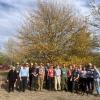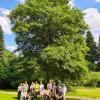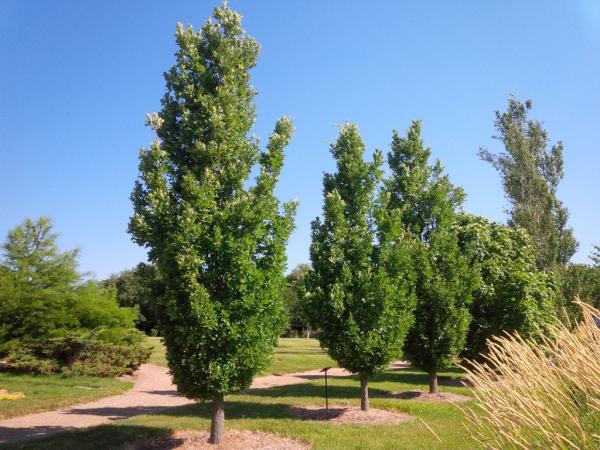Editor's Picks
Plant Focus
Direct Seeding of Threatened Oak Species as a Strategy for Riparian Strip Restoration in Cloud Forests
Project Contact: Omar Antonio Hernández Dávila, Postdoctoral researcher. Institute of Biotechnology and Applied Ecology (INBIOTECA, Universidad Veracruzana), Av. de las Culturas Veracruzanas 101, Col. Emiliano Zapata, Xalapa, Veracruz, Mexico.

Executive Summary: Cloud forests are considered a priority ecosystem for conservation because they support an important diversity of plants and animals, with a high percentage of endemic species, and provide different services. Unfortunately, cloud forests are threatened by different anthropogenic activities such as agriculture, animal husbandry, and urban sprawl. In Mexico, the remaining forest is scattered as different natural remnants, such as isolated trees, live fences, and riparian strips. Riparian strips function as propagule sources, maintain landscape connectivity, and provide environmental services. Although riparian strips are immersed in highly fragmented landscapes, these remnants harbor different species of animals and trees, including various species of oak trees.
The constant fragmentation and degradation of cloud forests, particularly of riparian strips, requires conservation and ecological restoration actions. Even though seedling planting has yielded positive outcomes in terms of survival of individuals, it involves considerable costs for the production and maintenance of seedlings in greenhouses, their transportation to planting sites, and the maintenance of plantations. On the other hand, direct seeding has been reported to be an effective, low-cost alternative for the restoration of secondary forests, and it may thus be a feasible strategy for the recovery of riparian strips.
The genus Quercus is considered a foundational group and an important tree component of cloud forests in Mexico and can also be found on riverbanks. Five oak species coexist in the riparian strips of central Veracruz (Quercus corrugata, Q. lancifolia, Q. paxtalensis, Q. pinnativenulosa, and Q. sapotifolia, although this number may increase because species such as Q. insignis, Q. meavei, and Q. cortesii, which are currently restricted to the forest interior due to logging, have been suggested to have an affinity for riparian zones. Given its ecological importance and that several species exhibit high germination percentages (a requirement for the selection of species for direct seeding) and different growth rates, this genus is an ideal candidate for the restoration of riparian strips in cloud forests. Considering the above, the objectives are: to evaluate the success of direct seeding in terms of plumule emergence and seedling survival and growth after 12 months of age using nine oak species planted in riparian strips in the cloud forest of central Veracruz. The involvement of the landowners will be crucial throughout the process; thus, our second objective is to conduct outreach workshops for landowners to communicate the importance of oaks and riparian strips, as well as to understand the landowners’ needs in terms of how they utilize the oaks and riparian strips. We will also organize talks in elementary schools to spread awareness about the project. These actions mainly aim to accelerate the recovery of degraded riparian strips and increase awareness about the importance of conserving and recovering threatened oak species in cloud forests. The results obtained in this study will be used to determine the best-suited oak species or those with the greatest potential for the restoration of riparian strips.
Target Species:
Quercus corrugata (LC)
Quercus delgadoana (EN)
Quercus lancifolia (LC)
Quercus paxtalensis (DD)
Quercus pinnativenulosa (NT)
Quercus sapotifolia (LC)
Quercus insignis (EN)
Quercus meavei (VU)
Quercus cortesii (NT)















